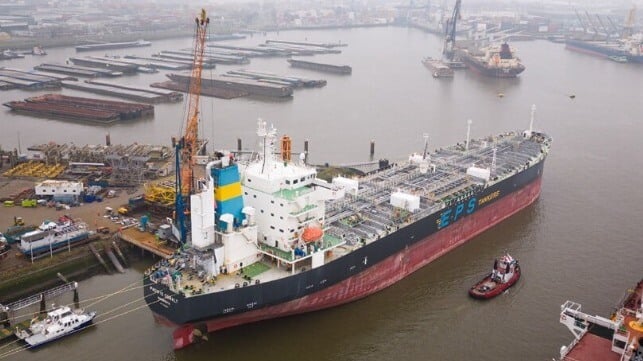Report: Lack of Port Infrastructure Challenges Onboard Carbon Capture

A new study looking at port readiness and the challenges of handling CO2 captured from ships at sea finds that few ports are ready to handle liquified CO2 coming from ships and preparations are lacking in key areas such as infrastructure and safety training. The report concludes that low port readiness is a major hurdle bottlenecking the adoption of onboard carbon capture and storage as a practical decarbonization solution.
Capturing carbon from ships underway has been viewed as a possible technology, especially in the near term to extend the life of in-service vessels while making progress on the global goals to reduce carbon emissions. Multiple companies are moving forward with developing the onboard technology with promising results. However, the report commissioned by Singapore’s Global Centre for Maritime Decarbonization in collaboration with Lloyd’s Register and ARUP, finds a critical need to define a clear pathway to offload, utilize, and/or store CO2. They write that these critical issues need to be resolved for large-scale commercialization of onboard carbon capture and storage.
“While pilots have successfully demonstrated numerous capture technologies onboard ships, it is still uncertain how captured carbon on merchant ships can be safely offloaded, and what the rest of the value chain looks like,” said Professor Lynn Loo, CEO of GCMD. “This study sheds light on these challenges, and highlights recommendations to holistically address these concerns for parties interested in advancing OCCS/LCO2 offloading concepts.”
Aiming to address the gaps in the onboard carbon capture value chain, the study found that a limited number of ports possess the infrastructure to offload liquified CO2, which is the most promising solution for shipboard capture and storage. They write that few ports have any CO2 capabilities and the ones that do are primarily designed to handle food-grade CO2 noting that the differences in purity standards limit the interoperability of those systems with shipboard CO2.
The study reviewed 162 possible scenarios for the handling of LCO2 evaluating the options for offloading infrastructure and the safe handling challenges. They focused on four concept configurations writing that ship-to-ship or ship-to-shore transfers using an intermediate LCO2 receiving vessel are the most promising approaches for offloading at scale. Ship-to-terminal transfer they concluded is more compatible at smaller scales.
They point to the challenges of setting the end use be it eventual sequestering or use as a feedstock for manufacturing synthetic fuels. They also note that LCO2 presents a unique set of safety challenges not commonly encountered when handling fuels in shipping. The report identifies safety issues such as asphyxiation and toxicity and conducted safety studies for identifying and handling the risks.
They point to unique challenges such as the dangers as CO2 nears its triple point where gaseous, liquid, and solid phases co-exist. In addition to being sensitive to impurities, they note minor changes in temperature and pressure can lead to hazardous situations, such as blockage in pipes and a build-up of pressure.
They concluded that for onboard carbon capture systems to be operationally feasible, the industry needs to develop a collaborative ecosystem to enable the value chain for managing captured CO2.
